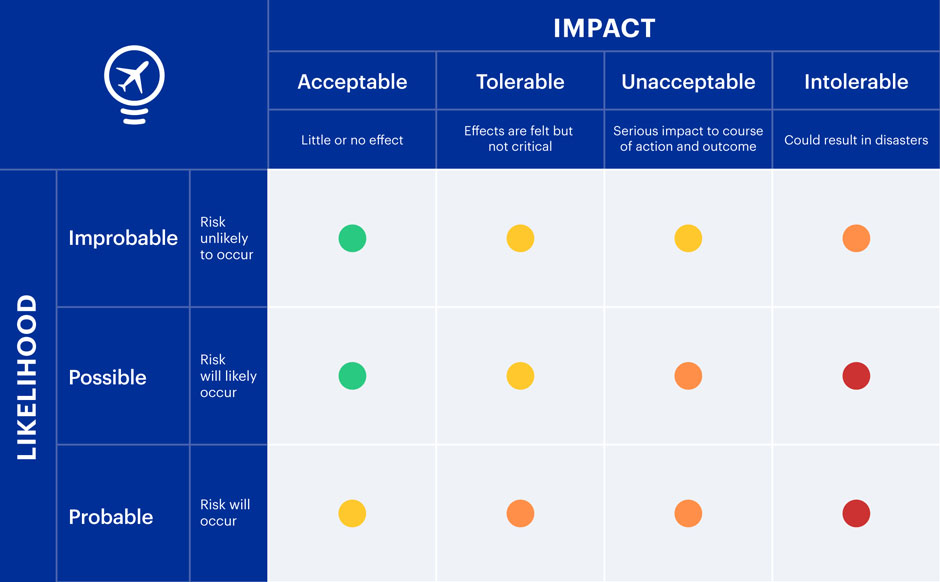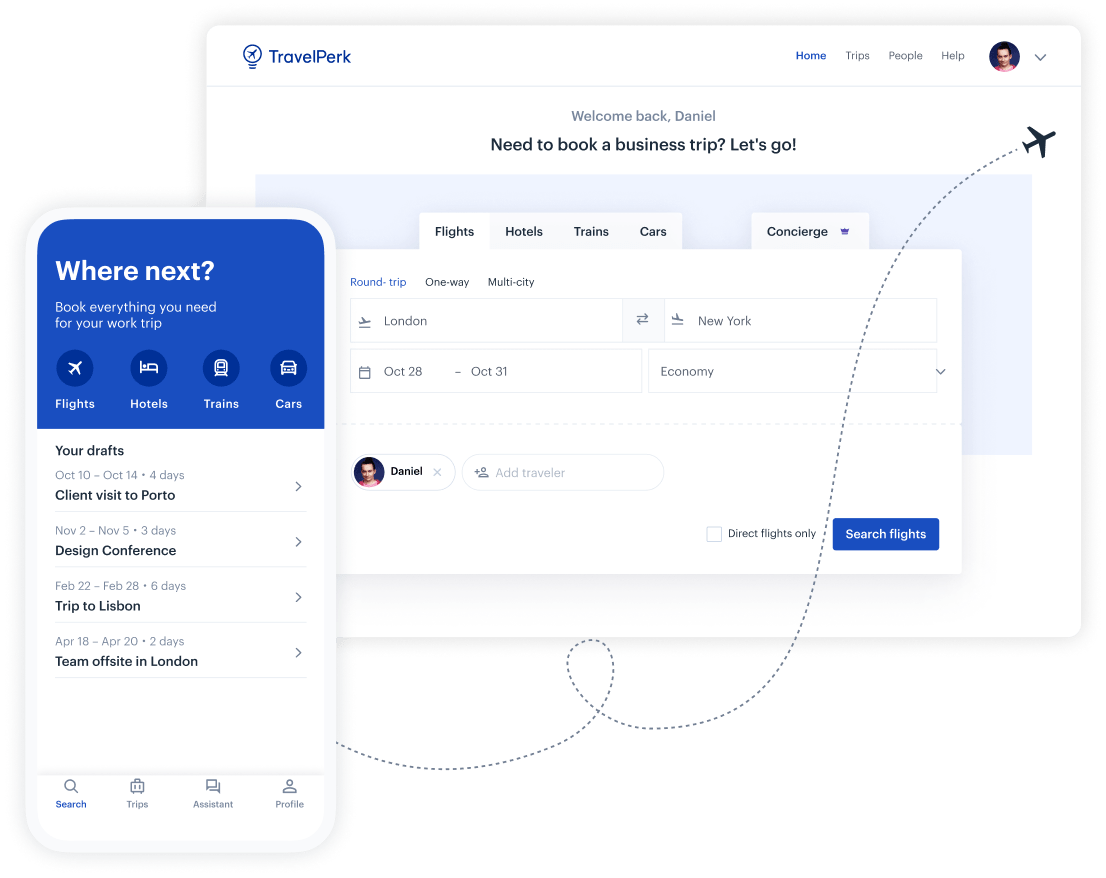How to perform a travel risk assessment for employees
If your employees are traveling for business then it’s your responsibility to keep them safe. Reducing risks before travel is a great place to start and more companies are recognising the importance of this step.
This is where a risk assessment comes in; making it possible to identify and manage the potential risks before they happen. Not only does it show you and the traveler have done some form of due diligence, but also it can help travelers avoid risks all together.
If you’re set with the task of implementing a risk assessment and you need a simplified process, then this guide is here to help you.
What is a travel risk assessment?
A travel risk assessment is integral to achieving duty of care obligations. The goal of the risk assessment is to identify any threats that an employee could face whilst traveling. Travel risks are constantly changing and the assessment covers everything from missing a flight to a global pandemic.
The results of the assessment will form the policies and procedures that’ll be implemented to lower these risks, wherever possible. Passing on this knowledge to the employee is essential, it can prevent incidents happening and protect employees in critical situations.
Risk assessment matrix
Generally, when managing risk the two main factors to consider are likelihood/probability and impact/severity. When you as a business professional or a travel manager is considering all the individual elements that make up a complete travel risk assessment (e.g. transport method, sanitation, and so on) this judgment between probability and severity should be the basis of most decisions.
The challenge lies in knowing what risks you can tolerate due to their severity and the limitation of your control. At one end of the scale is something very severe like a violent political revolution. Even if it only falls into the probable section of the graph, then this would be something that is too impactful to tolerate, as you, either as a traveler or as a business owner, cannot mitigate the risk effectively.
On the other hand, say the risk is like stomach sickness as a result of different hygiene practices, the risk is very probable, but the impact (providing the traveler is healthy) is limited. This, combined with the fact you can put in place relatively effective counter-measures, means that this risk would normally be deemed acceptable.

Why should you perform a travel risk assessment
Performing a travel risk assessment is key to protecting employees and your business whilst complying with the law. The assessment gives the opportunity to train employees on how to stay safe whilst traveling and what to do if something happens.
A well developed and communicated travel risk assessment will reassure the traveling employee: giving them the confidence to focus on their job with the peace of mind that they’ll know what to do if a situation arises. In turn, as a business you can trust that the employee and you travel manager are aware of potential threats, have set in policies to mitigate them, and you have a well informed employee out there - which is arguably the best defense against incidents.
Risk assessment form [Free resource]
We've made a risk assessment form for you to either print and give to your employees or as a checklist to use pre-travel. Get access to the travel risk assessment template form following this link. Make a copy and use at as you need.
Download your free travel risk assessment now
Our free travel risk assessment template is designed for you to either print or give to employees as a checklist pre-travel.
When to do a travel risk assessment and when not to
If you choose to perform a travel risk assessment, it should be done before any travel starts. Ideally, around five weeks in advance to give enough time to assess complicated trips and , if needs be, medical history. The longer the trip, the longer the risk assessment will take to perform.
Repeat destinations
In many cases, a risk assessment won’t be necessary if your traveler/s frequently visit the same location. Providing there are no major changes to tasks they will be completing, where they will be staying, how they will be traveling, or environmental changes such as political or health, then any previous risk assessment will still be relevant.
Domestic travel
This will largely depend on where your traveler will be going and the nature of the work. Generally speaking, risk assessments are not required for hops between cities or business hubs. However, if the trip will be longer than a week, it may be necessary to brief the employee on some info about their destination.
Last minute travel
Last-minute travelers can still benefit from a short risk assessment, especially if they’ve not traveled to the location before. Since time is of the essence, it is best to conduct a shorter risk assessment, focusing only on major risk factors. It’s advisable for these employees to purchase additional insurance if a full risk assessment can’t be carried out.
It’s worth noting that although a risk assessment is recommended, it isn’t compulsory. It’s up to the company if they decide to conduct one and it’s especially advised if the employee is traveling to a new environment.
See how to keep your travelers safe during business trips
What should a travel risk assessment include?
The risk that will be assessed is generally divided into two main categories: the individual and the external environment.
The individual
For the individual, it’s important to have a general understanding of the following:
- Traveler health: Is the employee healthy enough to travel? Are there any health conditions or allergies to consider?
- Travel patterns: Are you thinking of booking a car rental after an overnight flight? Think about the travel itinerary and its effect on the employee.
- Traveler gender and other increased risk factors: Solo female travelers are more likely to be victims of crime than other traveler types, and LGBT travelers are at increased risk of violent assault, especially in certain parts of the world. It’s saddening that travel managers have to consider these factors, but the safety of the individual is paramount. Taking these factors into account for the given destination means you can arm the traveler with all the information they need to make good decisions, and allows businesses to plan accordingly.
Once employee considerations have been made, it’s easier to reduce risks. For example, if an employee discloses they suffer from anxiety related to air travel, you will want to consider booking a train or car instead. If the employee requires disabled access, this needs to be considered when making reservations.
To give the employees the opportunity to disclose this information, the best option is to send them a questionnaire that they can complete before they travel.
The environment
The environment that the employee will be encountering needs to be carefully considered. Key things to review are:
- Transport type: Are there any travel restrictions or regulations to be aware of, or are there increased risks (e.g. traveling by car in a part of the country with poor quality roads)?
- Illness or disease: Is there a heightened risk of catching an infectious disease or an illness? Does the employee need a vaccination or medication prior to traveling?
- Natural disasters: Is there a chance of a natural disaster in that area, such as an earthquake or a hurricane?
- Crime rate: What are the crime rates at the destination? Advice should be provided to keep the employee safe.
The outbreak of Covid-19 is an example of how travel risks can change quickly. Conducting continuous risk assessments during this period is essential to keeping employees safe in the office or on the road.
Looking at the destination, population density and employee health will give insight into the likelihood of catching and spreading the disease.
How to implement the risk assessment
There are a few general principles to follow to make sure you implement an effective risk assessment as part of the overall risk management strategy.
1. Identify environmental threats
From searching travel data online, checking recent new stories and calling local embassies, there are multiple methods to research the environmental risks.
2. Consider the individuals’ risks
Gather important information by asking employees to complete a risk assessment form or questionnaire prior to travel.
3. Evaluate the risks and decide on mitigation measures
The company travel policy can help here: if you add the safety restrictions to your policy, employees simply cannot book options that are deemed high risk.
4. Communication and training
Talk through the risks with your employees so they understand and can ask any questions they may have. Teach your traveling team how to respond to a wide range of scenarios and make it clear who they can contact if they need help. This is an essential step.
5. Review and update when necessary
Identify what procedures worked and which could be improved. Could any incidents have been prevented? Refresh your research each time you send an employee on a business trip to be aware of new risks in that location.
Intro and Link to Travel risk assessment form
Although valuable, developing a thorough travel risk assessment can be a time consuming process. It’s no easy feat to assess all risks, educate employees and do all you can to make sure they’re safe whilst traveling.
If you’re looking to simplify the process of performing a risk assessment but want to make sure everything is covered, you can download our form here.


